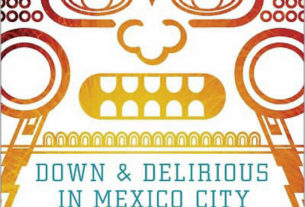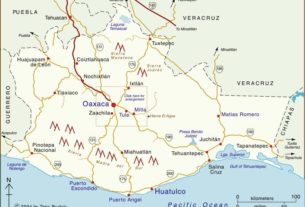Living in southern Mexico and making frequent trips to visit family and friends north of the border, we have taken many different routes to the frontera. From Tamaulipas, which connects the tropical south to the northern plains, to Sonora, where the vistas range from colonial towns to picture-perfect cowboy country, we have enjoyed all of our travels through the rugged and beautiful northern states of Mexico.
A few months ago, after a trip through Sonora, we began to question the differences in culture and cuisine that make this area so very different from the central and southern parts of the country, and found some answers in history and geography.
Because northern Mexico is made up of arid to semi-arid desert, with sandy soil and little rainfall, the beginning of agriculture – seed planting and crop cultivation – took place much later there than in the more fertile south. The early inhabitants of the area, members of several tribes collectively known as Chichimecs, lived as hunter-gatherers long after their southern brethren had begun farming. Just as their prehistoric ancestors had subsisted on large land mammals, the Chichimecs hunted the deer, rabbit and wild turkey of the northern plains, and gathered whatever fruit and wild grasses they could find.
The huge banquets and sophisticated dishes that greeted the Spaniards in Moctezuma’s court were not to be found in the north, where people lived frugally and preserved what they could. It was here that the Europeans found the best grazing land for the cattle they imported, and where they adopted the ancient culinary tradition of salting and drying meat. The machaca-dried beef-of northern Mexico is a delicious, versatile and practical food. Goats and sheep also thrived in the north, and continue to be used in the region’s most popular dishes. Restaurants in Nuevo Leon and Coahuila that specialize in cabrito – kid – are among the finest in the country.
In addition to cattle, the Europeans established their subsistence grain, wheat, in the north. Although the Spanish friars insisted that only wheat was suitable for the communion wafer and bread in general, they never succeeded in replacing corn in the tortillas of the south. In the north, however, where the Spanish-run cattle ranches and silver mines quickly dominated the area, wheat prevailed. They may have preferred bread loaves, but primitive kitchen conditions dictated that the Spaniards eat their wheat in the form of tortillas, and wheat tortillas still dominate norteño cuisine. The finest and tastiest are the thin, delicate tortillas sobaqueras, whose name is derived from the word sobaco – armpit – because the diameter of the tortilla was originally the length from hand to armpit. In Sonora, they are doubled over and rolled around beef and seasonings to make the exquisite burritos de machaca. Burritos themselves, still unheard-of in the south, are an example of the mutual culinary influences that exist between northern Mexico and the southwestern U.S.
The culinary tradition that arose in the mining camps, cattle ranches and exploring expeditions was a predominantly masculine one, and in the north, men ran the kitchen. Outdoor cooking was the rule rather than the exception, and grilling was the favorite cooking technique. The ranching culture dictated the use of wood fires for cooking, and this method is still perfect for preparing the tasty, tender beef of northern Mexico.
The area today has come a long way from the days of the colonial ranches and silver mines, with modern irrigation methods contributing to the variety of food now grown in the area. Chihuahua, named from the Nahuatl words for “dry, sandy place”, is now the largest producer of apples, peaches and walnuts in Mexico. The ancient norteño drying methods compliment the modern selection of fruit and vegetables, and the making of cajeta de membrillo – a delectable quince jelly – and chiles pasados is an artisanal form of food production that is largely carried out by small family businesses.
Families themselves have been influenced, either by intermarriage or cultural exchange, with the many groups that have settled in northern Mexico. Spanish, Sephardic, Chinese, Mormon and Mennonite people have all settled there, contributing to the home, restaurant and ranch cooking that sets the region apart from its southern neighbors.
A road trip through northern Mexico is a wonderful culinary experience, but one that isn’t absolutely required in order to enjoy some of the specialties of the area. Many can be made at home, with delicious, satisfying results. The following recipes use easy-to-find ingredients and many are particularly suitable for summer’s outdoor entertaining and grilling.
- Filete de Res al Chipotle: Filet Mignon with Tomatillo-Chipotle Sauce
- Machaca con Huevos: Mexican Dried Beef with Eggs
- Fajitas al Sombrero: Tamaulipas-Style Fajitas
- Frijoles Charros: Cowboy Beans
- Crema de Queso: Cheese Soup


